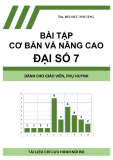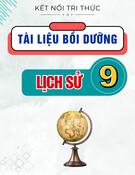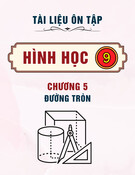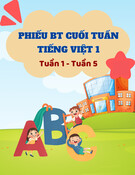
1
I. NỘI DUNG TRỌNG TÂM CHO BÀI KT CUỐI KÌ 1
A. Vocabulary (From Unit 1- Unit 6 )
B. Grammar :
1. The present simple tense (to be + ordinary verbs)
2. The present continuous tense
3. Prepositions of place
4. Wh – questions / Yes- no questions
5. Countable and uncountable nouns
6. Some/ any for amount
7. The comparative of adjectives
8. Modal verbs: can, can’t , must, mustn’t, should, shouldn’t
9. Pronunciation: sounds /əʊ/ and /ʌ/; /z/, /s/ and /iz/; /i:/ and /I/ ; / ʃ / and /s/
C. Writing (in about 40 - 60 words)
1. Write a paragraph about what you like and dislike about your neighbourhood/ or
your town.
2. Write a paragraph to describe your favorite room in your house.
3. Write a paragraph to desribe your school.
4. Write a letter to your friend to tell about Tet holiday.
5. Write a paragraph about one natural wonder you like best.
II. THEORY (LÝ THUYẾT)
1. Present simple tense and present continuous tense
Thì
Cách dùng
Dấu hiệu
Cấu trúc
SIMPLE
PRESENT
TENSE
(Hiện tại đơn)
1. Dùng để diễn tả
hành động lặp đi
lặp lại nhiều lần
như một thói quen
2. Dùng để diễn tả
lịch trình, thời gian
biểu.
3. Dùng để diễn
đạt một sự thật
hiển nhiên
- Adverbs of
frequency: Always,
usually, often,
sometimes,
seldom, rarely,
never (không bao
giờ)
- Every (day, week,
year, Sunday,
summer...)
- On Mondays,
twice a year...
(+) S + V / V+s/es…
(-) S + don’t / doesn’t+ V….
(?) Do/ Does + S + V…?
(H) WH + do/ does +S + V…?
- Chủ ngữ ở ngôi thứ 3 số ít như:
he, she, it, danh từ số ít (Tom,
her brother,…)
thêm “s” hoặc “es” vào sau động
từ.
- Chủ ngữ ở các ngôi còn lại như:
I, you, we, they, danh từ số
nhiều (my friends, Nhi and
Phong, ...) động từ giữ nguyên.
TRƯỜNG THCS PHƯỚC HƯNG
NHÓM TIẾNG ANH
NỘI DUNG TRỌNG TÂM
ÔN TẬP KIỂM TRA CUỐI KÌ 1
Môn: Tiếng Anh 6- Năm học 2022 – 2023

2
PRESENT
CONTINUOUS
TENSE
(Tương lai đơn)
- Dùng để diễn đạt
một hành động
đang xảy ra tại thời
điểm nói hoặc
xung quanh thời
điểm nói
- Diễn tả dự định,
kế hoạch
- now, right now, at
the moment, at
present, at this time
- Imperatives:
Look! Watch!/
Listen!/ Be
(careful/ quiet)!
- Answer questions
with “Where”
Eg: Where is your
mother?
She is cooking tin
the kitchen.
(+) S + am/ is/ are + V-ing
(- ) S + am/ is/ are + not + V-ing
(?) Am/ Is/ Are + S + V-ing…?
Yes, S + am/ is/ are.
No, S + am not/ isn’t/ aren’t
(H) WH + am/ is/ are + S + V-
ing…?
2. Possessive case (Sở hữu cách)
- Chúng ta sử dụng ’s sau một tên riêng.
Ví dụ: This is Elena’s room. (Đây là phòng của Elena.)
- Chúng ta sử dụng ’s sau một danh từ số ít.
Ví dụ: This is my mum’s book. (Đây là quyển sách của mẹ tôi.)
3. Prepositions of place (Giới từ chỉ nơi chốn)
- Giới từ chỉ nơi chốn mô tả người hoặc vật đang ở đâu.
+ in: trong
+ on: trên
+ behind: phía sau
+ under: bên dưới
+ next to: bên cạnh
+ in front of: phía trước
+ between: giữa
4. Comparative adjectives (So sánh hơn của tính từ)
- Ta dùng so sánh hơn để so sánh 2 người, 2 vật với nhau.
* Short adj (tính từ ngắn):
- Tính từ ngắn: là tính từ chỉ có 1 âm tiết (big, small, wide, long, short, tall…) hoặc tính từ có 2 âm
tiết nhưng tận cùng là -y, -ow, -er, -et, -le (busy, noisy, narrow, clever, quiet, simple)
- So sánh hơn của tính từ ngắn:
be + short adj (tính từ ngắn) + ER (than)
E.g.
Tính từ ngắn
So sánh hơn
small (nhỏ) →
smaller (nhỏ hơn)
long (dài) →
longer (dài hơn)
- Nguyên tắc thêm đuôi -ER:
+ tận cùng là E, chỉ cần thêm R: wider, larger
+ nguyên âm đứng giữa 2 phụ âm, gấp đôi phụ âm cuối, rồi thêm ER: bigger, hotter

3
+ tận cùng là Y, trước Y là phụ âm, chuyển Y thành I rồi thêm ER: busier, happier, noisier
* Long adj (tính từ dài)
- Tính từ dài là tính từ có từ 2 âm tiết trở lên: modern, boring, beautiful, exciting, expensive…
- So sánh hơn của tính từ dài:
be + more + long adj (than)
E.g. modern (hiện đại) → more modern (hiện đại hơn)
* Một vài tính từ đặc biệt:
Với một số tính từ sau, dạng so sánh hơn của chúng không theo 2 quy tắc trên.
Tính từ
Dạng so sánh hơn
good (tốt) →
better (tốt hơn)
bad (tệ) →
worse (tệ hơn)
far (xa) →
farther/ further (xa hơn)
much/ many (nhiều) →
more (nhiều hơn)
little (ít) →
less (ít hơn)
old (già) →
older/ elder (già hơn, lớn tuổi hơn)
5. Countable nouns and uncountable nouns
- Danh từ đếm được là những danh từ có thể đếm trực tiếp số lượng người hay vật/ sự vật ấy bằng
cách sử dụng số đếm. 2 loại danh từ đếm được “số ít (singular) và số nhiều (plural)”
Eg: a pen → pens, a watch → watches,…
- Danh từ không đếm được là những thứ mà chúng ta không thể đếm được bằng số. những vật quá
nhỏ, vô hình (chất lỏng, bột, khí, tiền, thời gian, hạt, hột …..): cream, chocolate , water, rice, sugar,
time, money...
6. Modal verb: must/ mustn’t
Positive form
Negative form
Form
S + must + V
S+ mustn’t + V
Use
Diễn đạt sự cần thiết, bắt buộc ở hiện
tại hoặc tương lai
mustn’t (không được phép) có ý nghĩa chỉ sự
cấm đoán.
Example(s)
- I must pick up my mom at 5pm.
- You must be hungry after work
hard.
- The boy musn't play baseball in that garden.
- You mustn’t walk on the grass.
7. Should/ shouldn’t for advice
Form:(+) S + should + V
(-) S + should + V
(?) Should + S + V ?
Yes, S + should.
No, S + shouldn't.
Eg: We should brush our teeth twice a day.
We shouldn't waste water.

4
→ “Should/ shouldn’t” dùng để diễn tả lời khuyên, hay ý nghĩ điều gì là đúng, nên làm hoặc không
nên làm.
8. a/ an/ some/ any
- an + danh từ đếm được số ít, bắt đầu bằng một nguyên âm (u,e,o,a,i)
Eg: an apple, an umbrella,…
- a + danh từ đếm được số ít, bắt đầu bằng một phụ âm
Eg: a pen, a school,…
Ngoại lệ: an hour, a uniform,…
- some + danh từ đếm được số nhiều/ danh từ không đếm được
“some” dùng trong câu khẳng định hoặc câu đề nghị, lời mời
Eg: I have some oranges
Would you like some water?
- any + danh từ đếm được số nhiều/ danh từ không đếm được
“any” dùng trong câu phủ định hoặc câu hỏi
Eg: There aren’t any milk in the bottle
Are there any bananas?
III. MA TRẬN BÀI KIỂM TRA (THỜI GIAN: 60 PHÚT)
T
T
Dạng
bài
Chuẩn kiến thức
Mức độ
Số
câu
Số
điểm
Nhận
biết
Thông
hiểu
Vận
dụng
cấp thấp
Vận
dụng
cấp cao
TL
TN
KQ
TL
TN
KQ
TL
TN
KQ
TL
T
N
K
Q
I
Listening
(Twice)
- Part 1.
Choose the correct
one/ Matching
True/ False
- Part 2.
Fill in the missing
information/ word
1
1
2
3
1
8
2.0
II
Multiple
choice
(4
options)
- Preposition 1
- Conjunction 1
- Vocabulary 1
- Pronunciation
(sound ) 1
- Verb tense/form
2 (tenses/ forms
students have just
studied)
- Structure 2
5
3
2
10
2.5

5
Lưu ý: Nội dung đề thi có thể được thay đổi (trong phạm vi 10%) so với ma trận.
IV. 2 ĐỀ KIỂM TRA THAM KHẢO
ĐỀ 1
I. LISTENING: ( 2.0pts )
Part 1. Listen and fill in the missing words. (1.0pt)
Dad’s birthday
Have party on: (0) Sunday
Start: : at (1)……………………..
Number of people: (2)…………………………
Colour of cake: (3)…………………………
Tidy: (4) the………………………
Present: some new gloves
Part 2. Listen and write T (True) or F (False) for the following statements. (1.0pt)
True
False
1. Friendship is very important for everyone.
2. Peter doesn’t have a very warm personality.
3. Peter is good at telling jokes, because he can create them on his own.
4. He always gets bad marks in his class.
II. MULTIPLE CHOICE. (2.5pts)
1. We haven’t got ………….. cheese in the fridge.
A. a B. an C. some D. any
- Conversation 1
- Find error 1
(Underlined parts)
II
I
Reading
(2
passages)
A-Lexical
(4 options)
B- Multiple choice
questions (4
options)
or T/F
2
1
2
2
1
2
10
2.5
IV
Do as
directed
- Make questions
- Rewrite
- Rearrange
-Combine
* Answer an open
question about 40-
60 words: a
paragraph
1
2
1
1
5
3.0
Tổng số câu
Tổng điểm
11
3. 0
14
4.0
7
2.0
1
1.0
33
10.0
Tỉ lệ %
30%
40%
20%
10%
100
%




![Bài tập so sánh hơn và so sánh nhất của tính từ [kèm đáp án/mới nhất]](https://cdn.tailieu.vn/images/document/thumbnail/2025/20250808/nhatlinhluong27@gmail.com/135x160/77671754900604.jpg)
![Tài liệu tham khảo Tiếng Anh lớp 8 [mới nhất/hay nhất/chuẩn nhất]](https://cdn.tailieu.vn/images/document/thumbnail/2025/20250806/anhvan.knndl.htc@gmail.com/135x160/54311754535084.jpg)
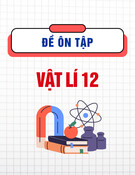
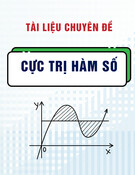
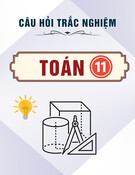
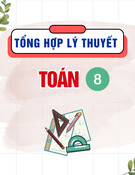
![Tài liệu Lý thuyết và Bài tập Tiếng Anh lớp 6 [Mới nhất]](https://cdn.tailieu.vn/images/document/thumbnail/2025/20250802/hoihoangdang@gmail.com/135x160/18041754292798.jpg)
